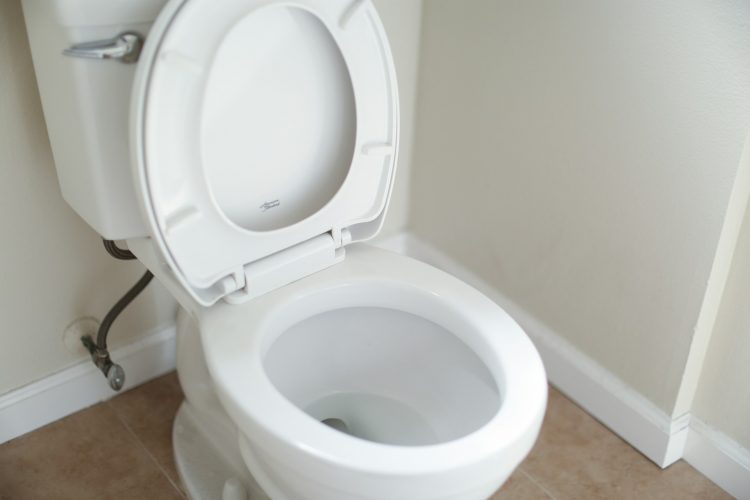One of the banes of a Hamilton homeowner’s existence is often finding the water level in their toilet bowl lower than normal. It’s not an uncommon issue and can be quite perplexing if you’re not familiar with the intricacies of your plumbing system.
The water level in your toilet bowl is not just about aesthetics; it’s crucial to the proper functioning of your toilet. A low water level not only signifies a potential problem with the toilet’s internal mechanisms but can also affect flushing power and, in some cases, lead to unsanitary conditions.
This comprehensive guide is designed for homeowners who encounter low water levels in their toilet bowls and wish to address the problem themselves, or at least understand what might be going on before calling a professional.
We’ll cover the underlying causes, DIY solutions, when it’s time to seek professional help, and even how to prevent this annoying issue from arising again. By the end of this post, you’ll be equipped with the knowledge to tackle this household problem head-on.
Understanding the Water Level in Your Toilet Bowl
An essential aspect of understanding low water levels in your toilet bowl is grasping how the water gets there in the first place. The tank on the back of your toilet is filled via the fill valve, typically following a flushing cycle.
The water entering the bowl passes through the rim feed and a jet at the bottom of the bowl, creating a siphon that washes waste away. However, the level of water should remain consistent in the bowl, and when it’s not, you’ll want to investigate further.
Recognizing Low Water Levels
Low water levels can be recognized by the fact that there is not enough water in the bowl to cover the opening of the drain visible at the bottom. It can also manifest as weaker-than-normal flush power and, in some cases, a lingering odor as there’s not enough water to form the necessary seal in a standard P-trap configuration.
Potential Reasons for Low Water Levels
Several common issues could be causing the water level in your toilet bowl to drop:
- A defective flapper valve that doesn’t close properly after a flush.
- Obstructions, such as scale or debris, in the rim feed preventing the full flow of water during a flush.
- A malfunctioning fill valve that doesn’t deliver enough water to the bowl.
DIY Solutions to Raise Water Level
Thankfully, many low water level problems can be fixed with some adjustments and a little elbow grease. Here are steps for you to take to raise the water level in your toilet bowl.
Adjusting the Fill Valve
Start by locating the fill valve. It is a device that controls the water level in your tank. Its height is typically adjustable, which in turn changes the water level in the bowl. Turn off the water supply to the toilet, typically found behind the toilet near the floor, then flush the toilet to remove as much water from the tank as possible.
Adjust the fill valve height using the appropriate tool, usually a screwdriver, to increase the fill level. Once adjusted, turn the water back on and allow the tank to fill. Flush the toilet and check the water level in the bowl. You may need to repeat this process a few times to achieve the desired water level in the bowl.
Dealing with Leaks
Occasionally, the problem isn’t as straightforward as adjusting the fill valve. Leaks can be more insidious, causing a drop in water levels. To check for leaks, place a few drops of food coloring in the tank and wait about 30 minutes without flushing. If there’s color in the bowl, you have a leak.
Common leaks include:
- A worn or misaligned flapper valve.
- A faulty flush handle allowing water to drain continuously.
- A crack in the toilet bowl or tank itself.
When to Call a Professional Hamilton Plumber
While DIY fixes can address many issues, there are times when the expertise of a professional plumber is necessary. Signs that you may need professional help include:
- You’ve adjusted the fill valve, but water levels still aren’t rising.
- Your toilet is making strange noises, suggesting a more complex internal issue.
- You notice other plumbing problems in your home simultaneously, which could indicate a more systemic problem with your plumbing.
Finding the Right Professional
When the time comes to enlist a professional, be sure to vet them thoroughly. Check for licenses, read reviews, and ask for recommendations from friends and family. It’s crucial to find a plumber you trust, as reliable plumbing service is essential to the integrity of your home’s infrastructure.
Preventative Measures
Maintaining proper water levels in your toilet bowl is an ongoing process, and prevention is often the best medicine. Here are some preventive measures you can take to avoid low water levels in the future.
Regular Inspections
Make it a habit to perform routine checks on your toilet and plumbing. Look for signs of leaks, corrosion, or loose connections. Addressing small issues early can prevent bigger headaches down the line.
Upgrade Your Equipment
If you have an older toilet, upgrading it to a newer, more water-efficient model can not only help save on your water bill but also reduce the likelihood of low water levels due to outdated components. Newer toilets are designed with better technology that minimizes these kinds of issues.
Maintenance Is Key
Regular maintenance is essential to keep your toilet—and plumbing system—functioning properly. Clean the rim feed and jets periodically to prevent clogs, and replace any worn parts before they fail completely.
Ensuring Your Toilet’s Water Level Is No Trickle Matter
Maintaining a consistent water level in your toilet bowl is not only a matter of convenience but also critical for proper sanitation and the avoidance of more serious plumbing issues. By understanding the critical components of your toilet system, recognizing the signs of a low water level, and knowing when to take action yourself or when to call for professional help, you can stay on top of your home’s plumbing health.
Remember, a seemingly minor issue like low water levels can often be a symptom of a broader problem within your plumbing infrastructure. Your actions today can spare you from expensive plumbing repairs tomorrow. It’s time to flush away those toilet troubles and ensure your home’s water levels are at their peak, pun intended.









